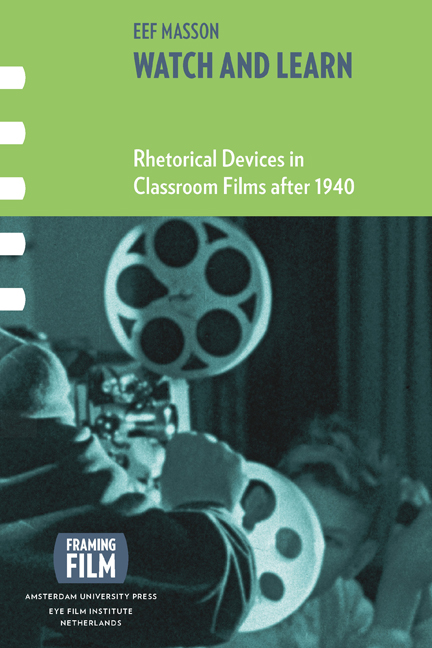4 - Textual Rhetoric I: Motivational Devices
Published online by Cambridge University Press: 20 January 2021
Summary
INTRODUCTION
My basic theoretical assumption, I have explained, is that film texts contain a variety of rhetorical potential that either does or does not come to activation, depending on the dispositif in which they are embedded. On its most fundamental level, this potential is of a motivational nature: it concerns the ways in which the implied audience is encouraged to take into consideration the statements that are made. Its primary objective, then, is to invite communication, or alternatively, to ensure the continuation of an already on-going exchange.
In this chapter, I loosely classify filmic procedures (representational techniques, or combinations thereof) in terms of the various motivational possibilities which they seem to exploit. In this process, I identify a number of strategies, inferred on the basis of recurring textual patterns, with which the classroom films discussed encourage their audiences to consider what is shown and/or said. These strategies, in turn, are based on implicit assumptions about what appeals to the viewers: notions as to which features make a text sufficiently interesting, engaging or agreeable to stimulate them to stay tuned (compare Silverstone 1984, 387).
The motivation of an (implied) audience is a basic rhetorical function, and therefore, common to all texts and all forms of communication. How a work's motivational goals are pursued, however, depends among others on the particular audience that is addressed. What appeals to one group of viewers, after all, does not necessarily appeal to another, and implicit assumptions about what does/does not hold motivational potential are inevitably linked to who should be reached. Any attempt to unravel a text's or corpus’ rhetorical structure should take this into account.
In what precedes, I have characterised my overall analytical endeavour as a search for filmic marks of addressivity: the texts’ orientation towards a specific, institutionally ‘situated’ audience (Allen 2006, 17). In light of my aim for this chapter this pursuit can best be rephrased as an inquiry into what the films under scrutiny say about their viewers’ textual ‘seduceability’: their inclination towards being won over by certain aspects of the text. As I am dealing here with teaching films, the implications I am looking for concern, very specifically, the presumed motivational sensibilities of pupils: children (not adults) who are viewing in a markedly educational environment (not an entertainment setting) and in the presence of a teacher.
- Type
- Chapter
- Information
- Watch and LearnRhetorical Devices in Classroom Films after 1940, pp. 145 - 208Publisher: Amsterdam University PressPrint publication year: 2012



